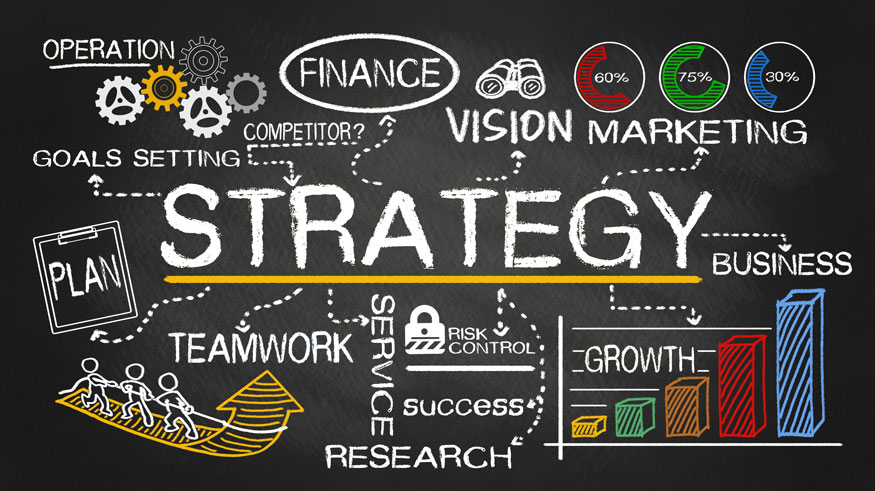
Article
7 Steps to Smarter R&D Strategy
When should you incrementally improve your existing products? And when should you develop replacements? I have an answer for you—a powerful technique that involves applying some smart design thinking. Get this R&D strategy right, and your path to success should become crystal clear.
Do you have a successful product or product line in the market?
First, I congratulate you on your success. Second, I ask, are you ready for what’s coming next?
Successful innovation isn’t a lonely sport. In fact, the better you do, the more “friends” show up at the party—customers as well as competitors.
As your product ages, many interesting factors begin to change its surrounding landscape:
- Competitors appear (sometimes in droves)
- Manufacturing becomes increasingly difficult as components become harder to find
- New technologies emerge that are well positioned to enhance your product’s functionality and cost
All of which will inevitably bring you to this question: How can you best apply your R&D budget to meet your business goals?
More specifically, when should you incrementally improve your existing products? And when should you develop replacements?
I have an answer for you—a powerful technique that involves applying some smart design thinking. Get this R&D strategy right, and your path to success should become crystal clear.
The Need for Smart R&D Strategy
If your company has existing active product lines, why should you establish a multi-year strategic R&D product and investment plan? Short answer: to spur growth and accelerate profitability.
Enter the fine art of “portfolio management.” Portfolio management is an approach to R&D strategy that involves defining a product-line roadmap and determining its associated investment. It requires that keeping 2 key goals front and center:
- Maintaining profitability of the current product line
- Creating the desired next-generation products
Sounds super easy, right? Not exactly. But not impossible either. Here’s what’s involved:
- Determining the business demands of the current product line
- Identifying the limitations to current products that prevent achievement of any business goals
- Devising plans to correct the critical limitations
- Implementing parallel plans to deliver a higher value next generation of products and services
Tip: Even if you don’t have existing product lines to worry about, this smart approach to R&D strategy is still highly valuable.
Even if you are focused on your first product today, your business will depend on your follow-on products as well. So thinking in terms of a portfolio will help add focus to your long-term value as a business as well as to short-term product value.
Your Challenge: Transitioning From Existing Products to a New Product Line
Let’s say our product line has been on the market for many years, and during that time, it has been incrementally updated and modified to:
- Add minor new features
- Keep production running
- Reduce costs
- Improve reliability
Although our product remains profitable at this point, its current architecture makes it increasingly difficult to incorporate new technologies. Thus the best opportunity to radically enhance our product is missed. Its functionality, value, and profit potential are limited by its architecture.
At the same time, due to obsolesce and single-sourcing, the age of the design is creating manufacturing issues that are becoming more difficult and costly to resolve.
And to complicate matters further, competitors seem to be catching up.
All of this adds up to one conclusion: The time has come to dramatically improve our product’s cost structure and functionality. But with updates and modifications becoming impossible, the desired business goals can only be achieved with an entirely new product.
The rub? Until this new product is available, the existing one must support our company. To make this feasible, it’s important that customers remain confident and that revenue remains relatively consistent.
In other words, we need a plan to keep the current product as stable as possible—with an appropriate level of investment, of course—while the next-generation is developed.
How do successful companies respond to these concurrent demands?
The Development Challenge
The question here is two part:
- In order to meet our short-term goals, how should we determine what investments to make in which improvements to the current product?
- In order to achieve our long-term goals with maximum profit, how do we define and develop a next-generation platform in parallel?
We’ll need a systematic process to ensure we’re making the best decisions—and that we’re recording the rationale for those decisions.
Don’t underestimate the importance of “writing it down.” It’s an easy way keep everyone on the same page as development progresses and allows you to objectively evaluate changes you might want to make later on, all without wasting time. The alternative is relying on the memory of multiple human beings and, well, that almost never turns out well. Trust me.
Finally, we need to ensure that the process is flexible, so we can adjust and make updates as projects move forward in time and new information gets uncovered.
The Strategic Solution for a Smarter R&D Strategy
The following 7-step process is designed to address these complex needs.
But before we dig in, a few important notes:
- These tasks are not sequential in nature, and many can be accomplished in parallel.
- This process is iterative and will require multiple passes to achieve the desired results.
- Uncovering and prioritizing requirements almost always impacts some other item that was already defined. So you’ll want to cycle through the tasks until the rate of change is low enough that the resulting estimates are close to (but not necessarily completely) stable. The goal of this set of activities is to get to an 80% confidence level, not 100%.
Finally, remember the 80/20 rule: 80% of the required effort (and time) for any task will be spent on the last 20% of the task. Use the first 20% of effort to get to 80% confidence and start the projects!
Task 1: Define the Business Assumptions
Defining the business plan will help you make optimal decisions on investments and resources. To do this, evaluate these three critical planning horizons (note that the duration of each of phase will vary depending on the industry and product):
Launch
Until the successful launch of the next generation, the current product must be capable of handling all business requirements.
In pinpointing a launch date, be sure to add time to account for unplanned issues and manufacturing ramp-up and stabilization. Remember that it is extremely rare for a new product design to work flawlessly for the manufacturer and customer in any volume from day one.
Transition
After launch, prepare for a transitional period for the old product as the new product ramps to volume production.
During this period, as the new product begins capturing the bulk of shipments and revenue, existing products will move to a support/maintenance mode.
Production
After the transition phase, the new product and its variants will comprise most shipments. At this point, old product will transition to end-of-life support. And planning for another set of future generation products can begin.
For each planning horizon, define the following information:
- Product shipments
- Markets served
- Product requirements for those markets
- Product revenue estimates
Use this data to answer two questions:
- How many of each type of product must be built?
- What product pricing will best meet profitability and revenue goals?
In other words, define the product mix based on best estimates of future customer demand.
But do not overanalyze your production plan. And remember that this information can and should be refined as more and better information becomes available.
Task 2: Identify and Categorize Current Product Issues
Document the list of issues for the existing product. For each issue, do the following:
- Define the required “fixes”
- Establish duration
- Document pre/co-requisites
- Determine estimated costs
Then, categorize the identified “fixes” by the degree of impact to both the overall system design and the company’s business success. A good starting set of issue categories includes:
- Issues preventing building new systems
- Reliability / maintenance issues
- User Interface, human factors, and operational issues
- Cost and functionality issues
Task 3: Prioritize Existing Product Issues
Once you’ve documented the issues and costs, the next step is to prioritize them.
At this point, issues that cannot reasonably be resolved before the end of launch should be dropped from consideration.
Prioritize and sequence remaining issues such that the most critical are accomplished first.
Then, apply a “triage” status to each item:
- Critical: The product cannot be built or supported if the issue is not addressed
- Important: Until these issues are addressed, they could seriously affect profitability, growth, and/or customer satisfaction
- Desired: Everything else, including enhancements and new functionality
Schedule and implement critical items first. Schedule important items according to a prioritized cost/benefit/risk calculation (investment/time vs. risk/return).
Drop important items that do not make the cut (be ruthless!), and add them to the next-generation product requirements consideration list, along with Desired items. Finally, place this list of future changes on a timeline for implementation.
Task 4: Define Basic Requirements for the Next-Generation Product
Defining the requirements for the next-generation product can be a lengthy process, but it is critical that some estimate be established quickly. Having a set of quick, preliminary requirements in place allows R&D planning to proceed in the short term and enables informed investment decisions.
Your product requirements will become a living document that gets refined over time. The good news: This will help you make estimates and test quickly. You can then update the requirements document as new information becomes available. The drawback: Requirements are likely to shift with the addition of new knowledge, which could lead to signification estimation errors.
But no matter how much research and planning you perform, and no matter how much time is allotted, it is rarely (if ever) possible to create a completely accurate final set of requirements and development plans. Waiting for perfection only delays the process and ultimately drives up development costs—all without a better result. Furthermore, if you don’t use the living document approach, you’re more likely to make product requirements static. This leads to ignoring new information and results in decreased future business success.
So understand the drawback and use the living document approach. It’s the most effective strategy for developing next-gen products.
Your basic requirements should include a high-level set of assertions about:
- Requirements relative to the current product specifications. Set challenging goals, such as reducing bill of material (BOM) cost by half, increasing reliability by 10x, increasing capacity by 50%, etc. Use these types of aspirational goals to drive thinking. (You can assume that your competition is already doing this.)
- Estimated annual volume shipments over the new product’s lifetime.
- Your financial capabilities, breakeven, and time-to-revenue needs.
- The target markets for the new product. Here, pay particular attention to differences in capacity requirements, future/new regulatory requirements, what users will operate the products, and its operating environment.
- Deficiencies in the current product and existing customer feedback. Speak to service techs, users, and others who interact with the existing products.
- New or emerging technologies that could be useful in a next-generation product. Evaluate the current product’s existing technologies and look for more effective replacements and enhancements.
- Long-term manufacturing/support plans.
- Risks and potential intellectual property issues.
- The sales model and how revenue is obtained.
- Sales ramp-up and training. Allow for demo units, sales tools, customer training, etc.
A lot to consider! And well worth it. In the end, you should arrive at a 1 – 2 page list of high-level requirements that you’ll use to develop a rough order of magnitude (ROM) schedule and development cost estimate. The ROM will be used for capital/funding requests and as the starting point for the future detailed plan.
Task 5: Identify Dependencies and Leverage
When managing multiple development efforts in parallel, it is critical to plan for dependencies and leverage.
Dependencies are those efforts that assume another effort must be accomplished first or in parallel. This is sometimes called a co-requisite task.
Leverages are those efforts that will be used across product versions and product lines.
In the case of existing products, it is important to understand any limitations in backward compatibility and have a strategy for retrofits (dependency) if appropriate.
User interface software may be used on both the existing and new products (leverage).
In order to avoid future confusion, create a list of the items that will and (perhaps more importantly) will not be common or retrofittable.
Task 6: Create a Product Roadmap
Your current product issues are prioritized and the new product ROM estimate is ready. Next step: Put this information in a graphical product roadmap—a visual representation of the combined plans.
The roadmap shows the overall product portfolio on a single page with each product release defined in time with its planned functionality. This gives decision makers an easy-to-comprehend, visual view of the overall strategy.
It is also a powerful tool to use when requesting funding and making investment decisions.
Task 7: Update the Plans
This might be the most critical part of this process: Keep your plans alive! Make it a regular part of your product-development process.
Update and review the portfolio roadmap on a regular basis to ensure that changes in assumptions and estimates are reviewed and approved and that the plan adapts to new information as it becomes available.
When planning for years of product shipments, remember that visions of the future are probably going to change every 3 – 12 months. If you don’t update the plan to accommodate changing reality, business success will certainly suffer.
Outputs From the Strategic R&D Planning Process
Outputs from this process will help you obtain necessary R&D funding for the product lines. They also form the baseline for the strategic R&D plan. The strategic plan will include the following:
- A prioritized list of current product issues to be addressed
- A schedule and cost matrix outlining proposed resolution of product issues
- A list of issues that will not be addressed
- A rough requirements document for the new product
- An ROM cost/schedule estimate
- A product roadmap
The Result: Maximum Profitability
Managing multiple product development activities is difficult.
Even under the best of conditions, keeping current customers well served while creating the next great thing is a challenging art. One mistake and your customers will either go to your competition or stop buying current products while they wait for your next one. Either scenario is devastating to your bottom line.
By applying a structured and flexible portfolio-management approach, you’ll set yourself up for success with clear needs, quick planning, and maintained flexibility. Doing so will ensure that you provide the right products on the right path to your customers, yielding maximum profitability for your business.






